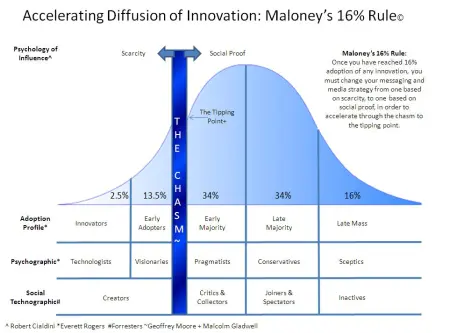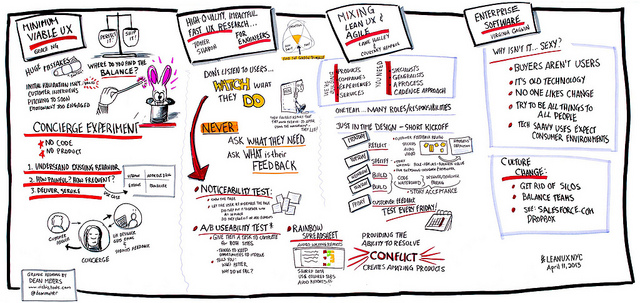Bridging UX, CX, and Innovation in the Construction Industry
The Intersection of Virtual Design and User Experience
Virtual Design and Construction (VDC) and Building Information Modeling (BIM) are revolutionizing how we approach architecture, engineering, and construction.
These technologies enable stakeholders to visualize, simulate, and optimize building processes digitally before breaking ground. However, their adoption hinges not just on technical prowess but on user experience (UX) and customer experience (CX) design principles.
This post explores how UX/CX frameworks can accelerate the diffusion of VDC/BIM innovations, drawing insights from a Finnish construction case study (Matinaro & Liu, 2015) and psychological models like Maloney’s 16% Rule and Rogers’ Diffusion of Innovations.
1. Virtual Design and Construction (VDC): A Primer
VDC integrates BIM tools to create data-rich, collaborative models that streamline design, construction, and facility management. Unlike traditional CAD, BIM embeds metadata (e.g., material costs, energy efficiency) into 3D models, enabling real-time decision-making.
Key Components of VDC/BIM:
- 3D Modeling: Tools like Autodesk Revit or Trimble SketchUp (Autodesk, 2023).
- Clash Detection: Identifying design conflicts early (e.g., HVAC ducts intersecting structural beams).
- 4D/5D Simulation: Adding time (scheduling) and cost layers to models.
Despite these benefits, adoption remains slow. Why?
2. The UX/CX Challenges in High-Tech Innovation
The Finnish case study (Matinaro & Liu, 2015) identifies barriers like resistance to change, fragmented workflows, and poor communication—issues deeply rooted in UX/CX failures.
A. User Resistance and Cognitive Load
High-tech tools like BIM often overwhelm users with complexity. Construction professionals, accustomed to 2D blueprints, face a steep learning curve. UX strategies to mitigate this include:
- Progressive Disclosure: Revealing features contextually (e.g., Nielsen Norman Group, 2020).
- Gamification: Rewarding users for completing tutorials (e.g., Duolingo’s model).
B. Fragmented Stakeholder Collaboration
VDC requires seamless collaboration between architects, contractors, and clients. Yet, incompatible software and siloed workflows breed frustration. CX solutions involve:
- Unified Platforms: Tools like BIM 360 (Autodesk, 2023) centralize communication.
- Persona Mapping: Tailoring interfaces to distinct user roles (e.g., UX Design CC, 2021).
3. Diffusion of Innovations: A UX Lens
Everett Rogers’ Diffusion of Innovations (Rogers, 1995) categorizes adopters into five groups: Innovators, Early Adopters, Early Majority, Late Majority, and Laggards. For VDC/BIM, crossing the “chasm” between Early Adopters and Early Majority (Moore, 1999) demands UX-driven strategies.

Figure 1: Rogers’ Adoption Curve
Maloney’s 16% Rule: The Tipping Point
The image references Maloney’s 16% Rule, which posits that reaching 16% adoption triggers exponential growth. To achieve this:
- Social Proof: Highlight success stories (e.g., “XYZ Firm reduced costs by 20% using BIM”).
- Influencer Advocacy: Engage industry leaders to champion VDC (e.g., Harvard Business Review, 2018).
4. Case Study: Finnish Construction’s UX Lessons
The Finnish case study (Matinaro & Liu, 2015) reveals critical UX/CX insights:
A. Leadership as UX Champions
Middle managers resistant to BIM stalled adoption. Solution: Train leaders in change management and user advocacy (Kotter, 2012).
B. Standardization vs. Flexibility
Lack of BIM standards led to inconsistent models. CX fix:
- Design Systems: Create reusable BIM templates (e.g., Figma, 2023).
- Feedback Loops: Regular user testing with contractors (UserTesting, 2023).
5. Psychographics: Designing for User Mindsets
The image’s adoption profiles align with Forrester’s Social Technographics (Forrester, 2006):
| Adopter Type | Psychographic | UX Strategy |
|---|---|---|
| Innovators | Tech Enthusiasts | Beta testing, advanced feature access |
| Early Majority | Pragmatists | Case studies, ROI calculators |
| Laggards | Skeptics | Simplified UI, risk-free trials |
6. Future Trends: AR/VR and CX Personalization
Emerging tools like augmented reality (AR) bridge the gap between virtual models and physical sites. For example:
- Microsoft HoloLens: Overlay BIM models on construction sites (Microsoft, 2023).
- AI-Driven CX: Chatbots guiding users through BIM workflows (Drift, 2023).
7. Recommendations for UX Designers
- Co-Design with End Users: Involve contractors in tool development (IDEO, 2023).
- Reduce Friction: One-click exports from BIM to procurement systems.
- Measure CX Metrics: Track adoption rates and user satisfaction (Qualtrics, 2023).
Conclusion: Building Bridges Through Design
VDC/BIM’s potential is undeniable, but its success hinges on human-centered design. By applying UX/CX principles—from progressive disclosure to psychographic segmentation—we can accelerate innovation diffusion and transform the construction industry.
References
- Autodesk. (2023). BIM 360. Retrieved from https://www.autodesk.com
- Matinaro, V., & Liu, Y. (2015). Virtual design and construction: Innovation process and diffusion in Finnish construction business. International Journal of Innovation and Learning.
- Nielsen Norman Group. (2020). Progressive Disclosure. Retrieved from https://www.nngroup.com
- Rogers, E. M. (1995). Diffusion of Innovations. Free Press.
- Microsoft. (2023). HoloLens in Construction. Retrieved from https://www.microsoft.com


